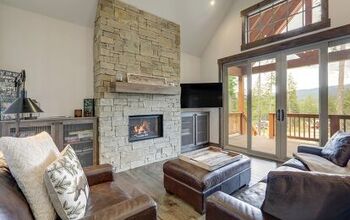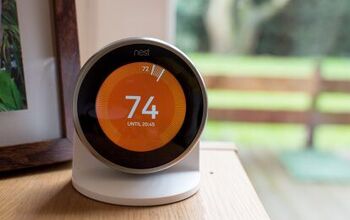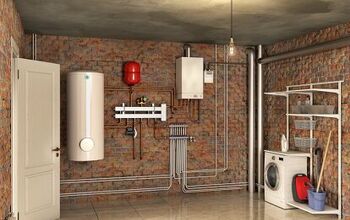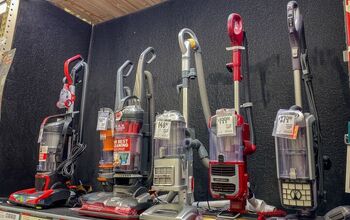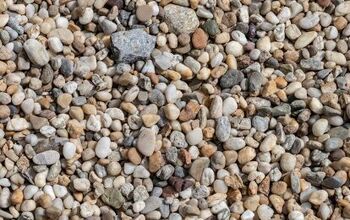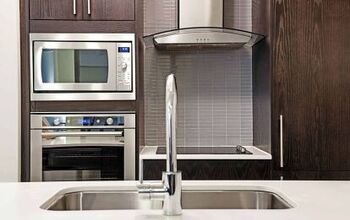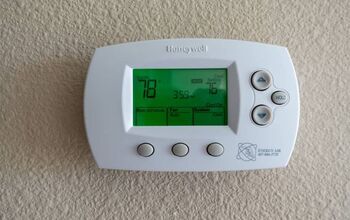Top Tips For Gardening With Limited Space

You might think that you need acres of fertile land to garden. While a field with nutrient-rich soil makes gardening easy, you don’t need vast farmland or even a big yard to garden successfully. You can even have a great garden with limited space, especially if you learn different ways to maximize your outdoor growing spaces.
Some of the best ways to garden with limited space include using vertical planters, hanging plants, and selecting plants that can climb upwards. Choose plants that are compact and grow quickly. It’s also wise to opt for vegetables and fruits that produce a lot, and continuously, so you get the greatest return on your investment. Plant in a grid, and feed the soil regularly.
Gardening is a hobby that anyone can undertake, but it can be a bit harder when your space is limited. If you have a tiny yard or no yard at all, there are still ways to cultivate a successful garden. Below is a list of some top tips and hacks to help you grow a successful garden with limited space.
15 Tips To Remember When Gardening With Limited Space
1. Use Vertical Planters
One of the best ways to maximize your garden when you have limited space is to use vertical planters. If you have a small area where gardening is possible, try building your garden upwards.
Plant vegetables and flowers in the ground that can tolerate shade. Then, as you move upwards, you can plant more sun-reliant plants higher up in elevated planters. You can even add a trellis for climbing plants. The idea is to use all your horizontal and vertical space in order to completely maximize every available inch of your garden.
2. Find Plants With Short Growing Seasons
Another great way to make the most out of your limited gardening space is to select plants that have short growing seasons. By selecting plants that mature quickly, you can easily get more than one planting out of the same space in just one season.
Find plants that you can start indoors in late winter, so they will start to mature in the early spring. There are also many vegetables and flowers that you can harvest in the late fall. As long as you plant with intention and plan your harvest, you should be able to get multiple harvests in one year.
3. Choose Plants That Require Minimal Space
Some plants need room to grow and don’t like competition. This might be fine when you have endless space, but it’s a huge problem when your space is limited. Try to choose plants that don’t mind being a bit crowded and don’t need to spread out. This will allow you to plant more without having to worry about competition.
4. Choose More Climbing Plants
In addition to vertical gardening, you can also select plants that do the vertical work for you. Many vegetables and flowers love to climb. Beans, peas, cucumbers, passion fruit, and many other plants grow in vines and are happy to climb up a trellis.
These plants will thrive as they climb, freeing up more ground cover for other plants. Remember to plant climbing vines in a part of your garden where they won’t cast a shadow on the rest of your garden.
5. Use A Grid System
When you have limited space to work with, organization is key. You don’t want to “eyeball” your planting. Instead, you should set up a grid system in your garden, as this will ensure you maximize your space without overcrowding your plants.
As you plant each vegetable and flower, ensure you know how much space they require. This will ensure a high success rate with minimal competition between plants.
6. Install A Drip Irrigation System
There are some advantages to having a small garden. One benefit is that it is much easier to water. One consideration when planting in a limited space is a drip irrigation system. These systems are easy to install and make watering a breeze.
In addition to simplifying watering, a drip irrigation system waters the soil directly, instead of the leaves. This keeps the soil moist and helps prevent mold.
7. Add Companion Plants
Since you will plant different species close to one another in a small garden, it’s a good idea to think about companion plants. Several plants help each other out in a garden. They help offer nutrients, pest control, and other benefits.
As you develop the list of plants you want to grow, start thinking of what plants you can group to ensure a higher rate of success.
8. Incorporate Hanging Baskets
If you don’t want to go through the effort of building a vertical garden, then opt for hanging plants instead. Many people use hanging baskets outdoors for different types of ferns, succulents, and hanging flowers. In reality, you can plant so much more in one of these vessels.
Several types of tomatoes and many herbs are just a few plants that do well in hanging baskets. The key is keeping these baskets watered, as the soil dries out quickly.
9. Keep Your Soil Rich In Nutrients
When you maximize the space in your garden, you are also maximizing the soil. With so many plants and root systems, it should come as no surprise that nutrients are quickly depleted from small and crowded gardens.
Ensure your garden is fed regularly with the nutrients it needs. Provide it with plant food and compost to ensure your garden thrives for the entire season.
10. Install Window Boxes For Additional Space
Window boxes are another way to squeeze in a bit of extra gardening while giving your home some added curb appeal. Window boxes are easy to install and simple to care for. You can plant herbs or flowers in these boxes and enjoy watching them grow from inside your home.
11. Plant Vegetables That You Can Continually Harvest
When you have limited space for gardening, you must be very particular with the plants you choose. Always opt for plants that will yield the most and ones that you can harvest continually.
For example, there are many tomato varieties. Choose one that is easy to grow and provides lots of tomatoes, and for several months. This makes the most of the space, instead of planting an heirloom variety that will only give you a few tomatoes after many months.
12. Create A Container Garden
Remember, you don’t need a yard to grow a garden. As long as you have an outdoor space, you can create a container garden. Container gardens are great for those looking to garden on a budget. You can even build a vertical container garden by staging containers at different heights.
13. Build A Wall Garden With Pallets
If you have a large wall or fence, then you can turn it into a garden. Wall gardens are a great way to maximize outdoor space. You can use palettes and other cheap and free materials to build a wall garden. Not only do vertical wall gardens maximize space and allow you to plant more, they also make your outdoor space look more beautiful.
14. Find Compact Plants To Incorporate
There is almost always more than one type of each vegetable and flower. Since you are trying to make the most out of your limited garden space, you should opt for the most compact varieties whenever possible. Choosing plants that take up less space allows you to plant more.
15. Create A Detailed Garden Plan
It’s always smart to map out your garden in advance. When you have limited space, a detailed map and garden plan are essential. This will ensure you maximize your space, growing season, and also purchase all your garden needs on time. Garden plans make gardening less stressful, keep you on task, and can help save you tons of money.
Wrapping Up The Top Tips When Gardening With Limited Space
You don’t need a huge yard to have a successful garden. As long as you have the will and a little bit of outdoor space and sunlight, you can have a great garden. To ensure your tiny garden thrives, you must use both vertical and horizontal space. You can build a vertical garden or a wall garden. Add window boxes and hanging plants, and opt for plants that can climb.
Try to find vegetables and fruits that take up minimal space and that you can harvest continually. Always map out your garden in advance and use a grid system to maximize every inch of space.
Related Guides:
- 9 Gardening Tips For Seniors
- Gardening Ideas For Drought-Prone Areas
- 15 Easiest Plants To Grow In A Vegetable Garden

Tom Gaffey is an expert writer who currently resides in Washington D.C. Tom has a passion for real estate and home improvement writing, as well as travel and lifestyle writing. He lived the last twelve years in Hawaii where he worked closely with luxury resorts and event planners, mastering his knowledge of aesthetics and luxury products. This is where he found his passion for home improvement and a keen interest in DIY projects. Currently, Tom resides in Washington D.C, and also working on his debut fiction novel.
More by Tom Gaffey










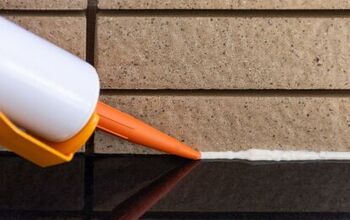
![How Much Weight Can a 4×4 Support Horizontally? [It Depends!]](https://cdn-fastly.upgradedhome.com/media/2023/07/31/9070333/how-much-weight-can-a-44-support-horizontally-it-depends.jpg?size=350x220)
